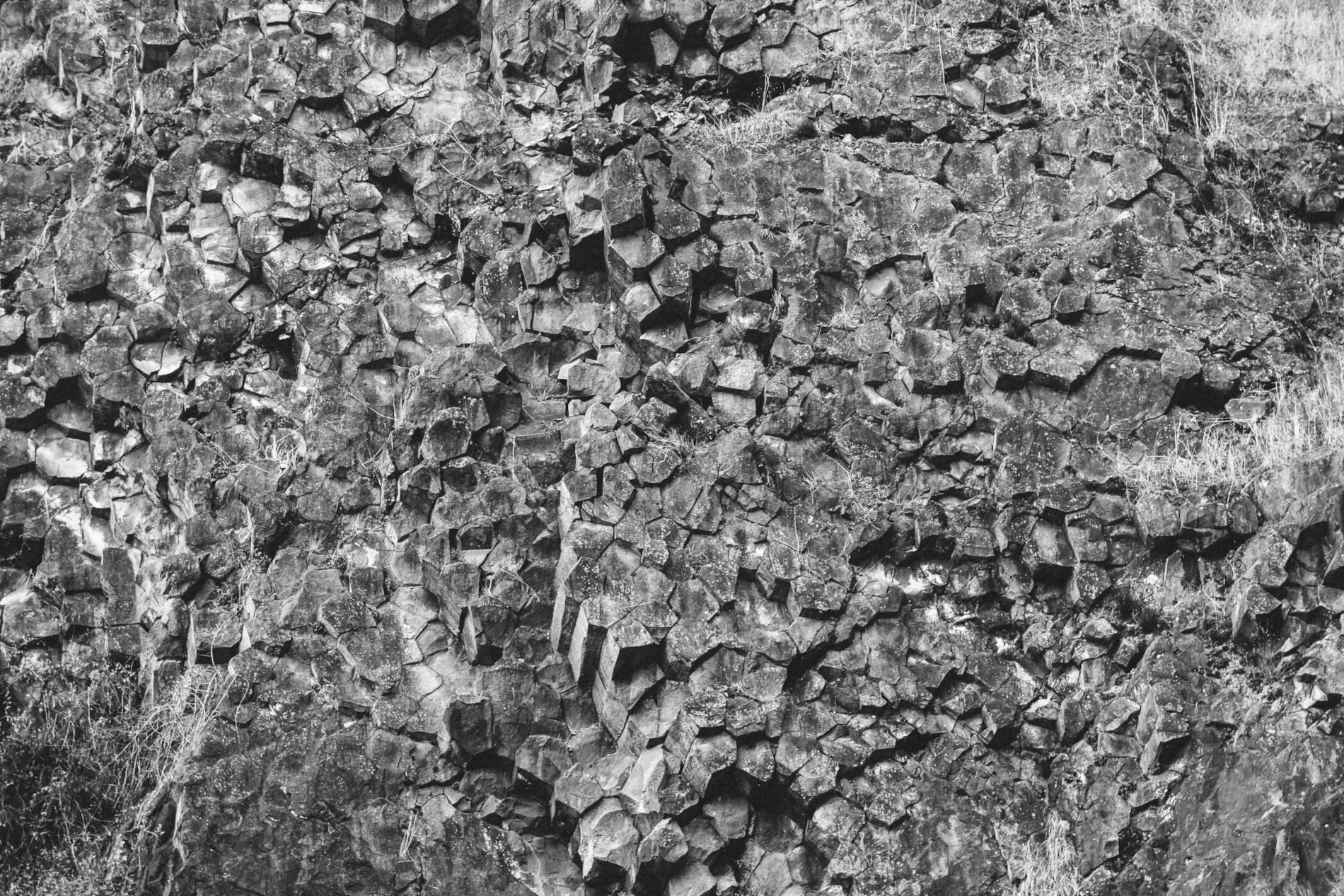Sanctuary Geology Description
By: John Phillips / Naturalist / Croton Point Nature Center
May 25, 2022
The bedrock of Edith Read Wildlife Sanctuary is part of the Hartland Formation, a large scale geological zone of which stretches from northwest Connecticut to the Long Island Sound. Read bedrock is primarily schist, a metamorphic rock, meaning that the original rock structure has been altered and distorted by heat and pressure. Schist is normally full of glittering mica and fractures in sheets. Garnet crystals form in schists near contact zones such as southeastern New York State. Rye public schools’ athletic teams take their name from the garnets that are found in local bedrock here. Edith Read’s schists were formed in the Ordovician period, 485 MYA (Million Years Ago) to 444 MYA, and are composed of metamorphosed seafloor sediments. The bedrock here is mostly covered by soil and unseen, but schist may be observed in the stonewalls around the Sanctuary, most of which are composed of local bedrock dislodged and distributed by Pleistocene glaciation.
Edith Read’s surface landscape was radically re-arranged at the end of the Pleistocene Epoch by a vast ice sheet 20,000 years ago to 16,000 years ago. This most recent glaciation covered New York State with an ice sheet thousands of feet thick in some places, which scraped down and redistributed the local bedrock. It also imported rock debris from further north, leaving us the landscape we see today.
The origins of Edith Read Sanctuary’s bedrock stretch back to the Paleozoic Era when the oceans and continents of planet earth were in completely different locations and configurations. The story of North America’s East Coast over the past 500 million years is one of continental collisions. These collisions forced up mountain ranges which subsequently eroded down towards sea level and below. They then were lifted back up again during subsequent continental collisions. It’s hard to imagine that during the earth’s recent history three major mountain building events (orogenies) have transformed the place we live. The Taconic Orogeny, before animal life on land; the Acadian Orogeny; when early amphibians and trees appeared; and the Alleghenian Orogeny when reptiles first evolved, were all followed by the erosion and diminution of these mountain ranges, leaving traces of each in today’s uplifted and gently rolling Appalachians. These cycles each took close to a hundred million years and had a profound influence on the geology and geography of what we now call the east coast of North America.
For Edith Read the most significant of these mountain building events was the Taconic Orogeny in the Ordovician Period.
During the Ordovician period there were only a few primitive plants colonizing the land, but the oceans and seas were full of life including many species of corals, graptolites, brachiopods, trilobites, and cephalopods. Most of these species are now extinct, but fossils in ancient rocks preserved their remains. This chapter in the earth’s history lasted for about 41 million years.
Earth’s solid outermost layer, the lithosphere, is assembled of enormous continental plates which drift slowly on top of the asthenosphere, a deep partially molten layer of rock. Currently, the North American continental plate (in the Ordovician termed the Laurentian Plate) is pulling away from the African continental plate at a rate of about 1 inch per year as the Atlantic Ocean widens. During the Ordovician Period however, the Atlantic Ocean was shrinking, as a collision with the distant Baltica continental plate pushed seafloor west over the Laurentian Plate, forcing it downward towards the asthenosphere. The intense pressure and heat where the plates collided cracked (faulted) the earth’s crust allowing magma to rise and creating a chain of volcanic islands. These islands moved steadily west, crushing, metamorphosing and welding rock from the ancient seafloor to the eastern edge of Laurentia. The enormous pressure on eastern Laurentia’s continental margin pushed far inland, folding, faulting, and raising a vast mountain range as high as the Rockies, stretching from Canada to Georgia. Today the deeply eroded roots of these mountains recline along New York State’s eastern border from Connecticut to Vermont. We call them the Taconics.
Edith Reid’s schist is composed of seafloor sediments (primarily erosional mud and silt) trapped between the Laurentian continental plate and the approaching volcanic island arc. The seafloor muds and silts were deeply buried over time and underwent diagenetic change via compaction (settling and pressure) and mineralization (interaction with heat and water) completing the metamorphosis into the glittery, brittle rock we see today.
If you were at the shore of Edith Read Sanctuary 20,000 years ago, the blink of an eye in geologic time, you’d be standing on as much as a thousand of feet of solid ice which stretched from the north pole to Long Island. This was the maximum ice advance of the most recent Pleistocene glaciation, known as the Wisconsin Glacial Episode. What is now Long Island Sound was also covered by deep ice, and Long Island itself was invisible, a ridge of mixed boulders, smaller rocks and sediments dumped at the foot of the farthest edge of the ice sheet. The Atlantic Ocean was over thirty miles beyond that because the glaciers tied up enough water to drop sea levels drastically, exposing huge parts of the continental shelf that are now drowned. There was so much ice on the land that its weight pushed the continental crust down!
The glacier bulldozed the entire northeast, scraping away forests, soils, and the bedrock itself. Piles of debris left by the glacier are called moraines, and Long Island is where the glacial bulldozer stopped, leaving a high terminal moraine of mixed clay, silt, sand, pebbles, rocks, and boulders. When the glacier began to melt it receded northward, releasing torrents of water along with debris it was carrying, carving deep river channels, forming enormous impounded lakes and piling sand, gravel and rocks in valleys. North of the terminal moraine the landscape of northeastern North America was completely transformed.
Edith Read Sanctuary manifests a spectacular exposure of glacial outwash sediments and deposition, likely left by seasonal advance (freezing) and retreat (melting) of the glacier in this location. This exposure is at the easternmost limit of Read’s shoreline where a cliff 40 feet tall exposes a cross section of glacial action. Notice the various layers of silt, sand and cobbles deposited by different meltwater velocities from trickles to raging rapids, as well as the layers of boulders which can only have been moved by the ice, then dropped after a resurgent push. Please observe this exposure from a respectful distance as large rocks may be released at any time! Other signs of glaciation are the many ice-scattered rocks and boulders that stud the forest floor and comprise the stone walls that run through the Park. Under close observation you can tell that some of these rocks are not local and may come from many miles further north.
Crashing continents! Towering mountains rise then vanish! A world deep under ice! These geological episodes can all be perceived in Edith Read Sanctuary’s landscape, and are just a few of the many natural wonders to observe here!

